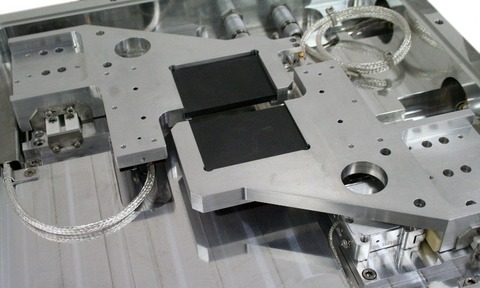
Four axis precision slit packages have been developed for the Larmor instrument at STFC’s ISIS neutron and muon beamline facility.
Lamor is a multi-purpose instrument for SANS, diffraction and spectroscopy residing at the Science and Technology Facilities Council’s (STFC’s) ISIS facility.
It is hoped to provide a suite of techniques not currently possible at ISIS and will also expand the range of spatial and temporal length scales to new areas.
Heason has supplied several types of slit packages for use in ambient and UHV environments that suit the wide range of diffraction and spectroscopy techniques that the new multi-purpose instrument will offer the scientific community.
The slit packages are essentially 4-axis motorised linear blades that are precisely positioned to sub-micron levels in order to modify the face area and size of the neutron beam to enable the scientists to tune its resolution and divergence to achieve the optimal frequency required for the materials being examined on the instrument.
The unique design feature, engineered by Heason’s expert design team, was the development of the package comprising of ceramic motors and bearings, support frames, housings and feedback encoders assemblies built using completely non-ferromagnetic materials so as not to influence the instrument’s measurement capability in any way.
With no lead-screws or externally mounted motors, the zero backlash direct drive design has reduced the amount of components typically employed in slit packages that use rotary motors - which also require complex magnetic screening and feed through devices - resulting in increased long term reliability, greater stability, much improved accuracy and positional repeatability, as well as considerable space savings.
The ceramic motor technology used in the packages – from Nanomotion, an exclusive distribution partner of Heason Technology with a superlative reputation for demanding nanometre-scale positioning applications - not only provides the non-magnetic micropositioning element for the application but also benefits from its ability to hold position with no movement whatsoever when power is removed.
This feature allows the slit package to be isolated from power at the critical measurement phase, maintaining its exact dimensions but eliminating any potential for movement and heating that could influence the measured results.




